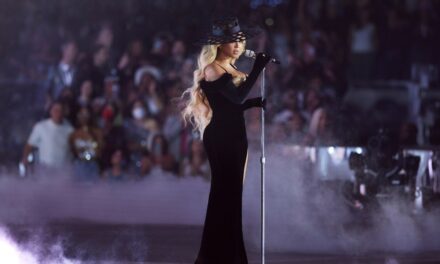Batik textiles also flourished very early in several west African regions, most notably among the Yoruba people of Nigeria and Senegal, whose pattern-making traditions have been passed down from mothers to daughters for centuries. Yoruba batiks, called adire cloths, are created via two different methods of resist-dyeing: “adire eleso” (tying and stitching the fabric similar to the tie dye process) or “adire eleko” (using starch pastes made from plant roots or rice as a resist). African batik designs typically incorporate indigo dyes on cotton, with designs made by freehand drawing or by using resources at hand, including feathers, sticks, bones, combs, wood tools, or metal stencils. The process sometimes involves large gatherings that serve as cost-saving, mass dyeing sessions for groups of batik-making women.
In Malaysia, new batik-making methods evolved out of the Javanese tradition. Around the 17th century, Malaysian artisans began making patterned fabrics featuring larger, less intricate floral motifs. Often hand-painted, these Malaysian batiks rarely included animal or human figures and tended to focus solely on natural images.
European traders visiting Java in the 1800s brought back various batik cloths and helped spread the textile around the world. In the 19th century, Javanese batiks began to be displayed in Dutch museums, popping up at various European expositions. But batik reached the height of its popularity in Europe at the end of the 19th century, when a group of Dutch artists began experimenting with batik techniques in modern decorative arts—including Art Nouveau designers Carel Adolph Lion Cachet, Theo Neuhuys, and painter Agathe Wegerif-Gravestein (who founded her own batik workshop). By the early 20th century, the decorative practice was embraced by French (including celebrated “mother of French Batik” Mme Marguerite Pangon) and American designers, as well as craft enthusiasts and decorators in Holland, Germany, Poland, and Great Britain.
Batik made more waves in the British scene in 1960, when European artists and craftspeople again began experimenting with the possibilities of wax-resist dyeing. Among them, visual artist Noel Dyrenforth founded the Batik Guild in London in 1986, gathering together a small group of batik artists, lovers, and teachers of the technique. Today, the Batik Guild continues to promote the art and support its enthusiasts, educating the public about batik processes and techniques via lectures, workshops, online community, and a thrice-yearly color publication.
A relatively new extension of the ancient tradition, a Balinese version of batik gained popularity in the 1970s and soon became an important part of the island’s local textile economy. Bali batik motifs encompass a wider range of local, natural, and floral imagery, including leaf, fish, insect, and bird insignia, as well as activity-based patterns reflecting regional culture and the Balinese people’s close ties with nature.
In July of 1972, the Central Java Ministry of Education and Culture officially opened the Pekalongan Batik Museum, which showcases a large collection of local and foreign batiks, as well as information and artifacts related to the development of the art form over the course of several centuries.
The four types of batik
Batik Tulis
Hand-drawn Batik Tulis, or “written” batik, is considered the finest and most pure traditional form of Javanese batik. (It’s also the most expensive.) A time-consuming process, Batik Tulis involves intense manual focus and skill: The artist uses a small crucible of hot paraffin or beeswax with a thin spout to draw intricate, often dotted designs directly onto fabric by hand. (This tool, the canting, is unique to Indonesian batik.) In Batik Tulis, both sides of the fabric are treated with wax before being immersed in a series of dye baths. This repeated application of the wax ensures a strong resist that will develop clean, clear images in the final product—which can take anywhere from several days to a full year to complete.
Batik Cap
Batik cap, or “stamped” batik, is a technique that evolved to help speed up the painstaking decorative process. Though it doesn’t use a canting or involve hand-drawn imagery, this form of Indonesian batik (along with batik tulis) is recognized by UNESCO as part of an important cultural heritage. Batik Cap involves creating the same kind of wax-resist designs, but patterns are stamped rather than drawn into the fabric. Batik Cap involves a specific copper tool called a “canting cap,” which experts use to apply repeating designs like a stamp, using wax instead of ink. This form of batik is less idiosyncratic, but the fabric is easier to create, more uniform, and thus less expensive than hand-drawn Batik Tulis.
Batik Lukis
Batik Lukis is the form of batik that involves painting patterns, images, or lines onto blank, undyed cloth using any number of tools: paintbrushes, broomsticks, toothpicks, or other found tools. Often called batik painting, it’s a slightly newer development than the first two forms, and a less traditional, more openly creative style that allows for the development of new imagery and modern motifs. This style of batik is often linked to the aesthetics and personal choices of specific artists rather than to inherited wisdom and cultural iconography. The dye colors and wax designs in Batik Lukis tend to be more fun and experimental as well, and there’s more evidence of color gradients in this style.
Batik Pesisir
Batik Pesisir, also known as “coastal batik” or “Indonesian coastal batik,” is a stamped style of batik made on the island of Java as well as other seaside regions. The coastal tradition soared in popularity once Dutch, Chinese, and Indian merchants became involved in the batik industry. Although it is still centuries old, coastal batik is a relatively newer style that rose to popularity in the 19th century and is less tied to a specific cultural heritage. Unlike the status-signaling, age-old symbolism of more historic Indonesian styles, Batik Pesisir is more fashion-focused, more commercial, and more common. The techniques used to make it are less rigid, incorporating tools and steps inspired by foreign trade. Dutch, Indo European, and Chinese settlers introduced a host of new motifs in the late colonial period, as well as the stamping cap that allowed mass-production of designs. (In fact, a coastal batik sub-genre called Batik Belanda, or “Dutch batik,” developed in Java between 1811 and 1946. It encompassed fabrics from a smaller, European-led batik industry, which fused Western design elements with techniques and patterns from the native Javanese tradition. Its popularity faded after WWII.) Heavily influenced by Islamic art in the 16th century, coastal batiks tend to favor vibrant reds and blues over more traditional black, brown, and ochre dyes. This kind of batik is still identifiable by the influence of foreign art on its stamped motifs and nontraditional color palettes.





